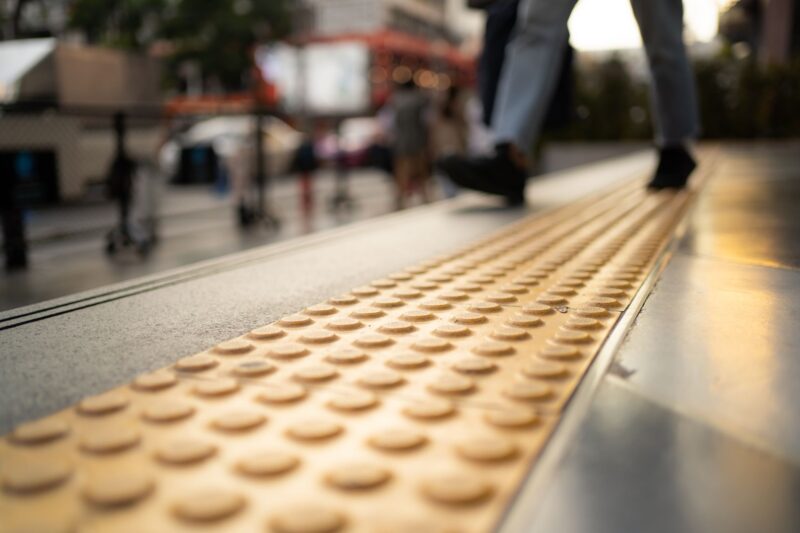As cities continue to grow and expand, the number of pedestrians on sidewalks and crosswalks increases. This has led to a greater need for pedestrian safety measures, including the installation of truncated domes. These small bumps on the sidewalk surface may seem unimportant, but they have a significant impact on the safety of visually impaired pedestrians.
What are Truncated Domes?
Truncated domes are small, raised bumps that are installed on sidewalks and crosswalks to assist visually impaired pedestrians in navigating these areas. These bumps are typically made of durable materials such as concrete, plastic, or metal, and are designed to withstand heavy foot traffic and weather conditions. Truncated domes are also known as detectable warning surfaces and can be felt with a cane or through the soles of shoes.
The Importance of Truncated Domes for Pedestrian Safety
Truncated domes play a crucial role in ensuring the safety of visually impaired pedestrians. Without these domes, visually impaired individuals would have a difficult time navigating sidewalks and crosswalks, putting them at risk of injury or accidents. Truncated domes alert pedestrians that they are approaching an intersection, a change in surface or a hazardous area, giving them time to adjust their path and avoid potential dangers.
ADA Regulations for Truncated Domes
The Americans with Disabilities Act (ADA) requires that truncated domes be installed in specific locations and meet certain requirements. According to ADA regulations, truncated domes must have a diameter of 0.9 inches, a height of 0.2 inches, and be spaced 1.6 inches apart. They must also have a contrasting color to the surrounding area, and be installed in a consistent pattern.
Installation Process of Truncated Domes
The installation of truncated domes requires a specialized process to ensure that they are properly installed and meet ADA regulations. The first step is to determine where the domes should be installed, which is typically at intersections, crosswalks, and other hazardous areas. The surface must be cleaned and prepped, and the domes must be carefully placed in a consistent pattern. Once the domes are installed, the surface is smoothed out to ensure a uniform appearance.
Materials Used for Truncated Domes
Truncated domes can be made from a variety of materials, including concrete, plastic, and metal. Concrete truncated domes are the most common and are typically cast in place, meaning that they are poured directly onto the sidewalk surface. Plastic truncated domes are often used in areas where the surface may shift or move, such as on a bridge or a suspended walkway. Metal truncated domes are less common and are often used in areas where durability is a top priority, such as in a busy train station or airport.
Maintenance of Truncated Domes
Truncated domes require regular maintenance to ensure that they remain effective in their purpose. The surface must be kept clean and free of debris, and any damage or wear must be repaired promptly. Regular inspections should be conducted to identify any potential issues and address them before they become a safety hazard to pedestrians.
Cost of Truncated Domes
The cost of truncated domes can vary depending on the quantity and type of material used, as well as the cost of installation. While some communities may view the cost of installing truncated domes as an unnecessary expense, the safety benefits for visually impaired pedestrians far outweigh any financial concerns.
Conclusion
Truncated domes are a crucial safety feature for visually impaired pedestrians, and their installation and maintenance should be a top priority for cities and municipalities. By understanding the importance of these small bumps on the sidewalk surface, we can ensure that all pedestrians have a safe and accessible path of travel. As cities continue to grow and expand, the need for pedestrian safety measures will only increase, making the installation of truncated domes an essential aspect of city planning and development.



